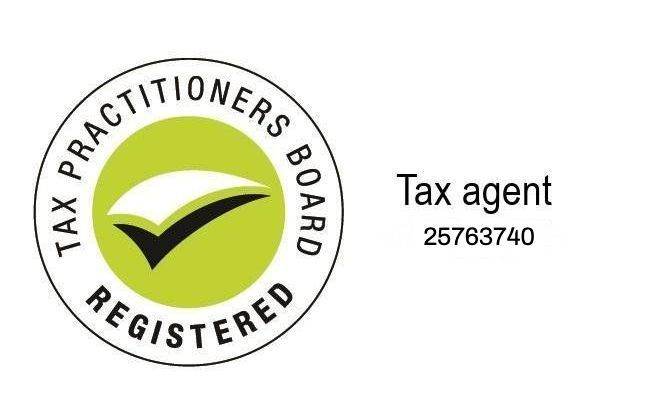Scaling Your Medical Practice: Financial Tips for Sustainable Growth
Vania Wang • January 27, 2025
Scaling Your Medical Practice:
Financial Tips for Sustainable Growth
As a medical professional, your practice isn’t just a business, it’s a platform to provide care, build relationships, and make a difference. Scaling your practice to meet growing demand is exciting, but it also comes with financial challenges. Whether you’re expanding your team, upgrading equipment, or opening a second location, a solid financial strategy is key to sustainable growth.

Here are five practical financial tips to help you scale your medical practice while keeping your finances healthy and your goals achievable.
1. Get Your Business Structure Right
Your practice’s business structure forms the foundation for its financial health. An optimised structure can minimise taxes, protect your personal assets, and create flexibility for future growth.
For Australian medical practices, common structures include:
- Companies for limited liability and tax flexibility.
- Trusts for income distribution and asset protection.
- Partnerships for shared ownership and responsibility.
Each structure has its pros and cons, and what works best depends on your practice’s size, goals, and revenue streams. Consulting with a specialist accountant can help you choose the structure that aligns with your long-term vision.
2. Invest in Technology Wisely
Expanding your practice often means upgrading equipment, software, or facilities. While these investments can boost efficiency and patient care, they require careful planning.
Assess Return on Investment (ROI): Will the new equipment or technology pay for itself through increased efficiency or higher patient volume?
Consider Financing Options: Leasing equipment may preserve cash flow, while outright purchasing can save on interest in the long run.
Claim Tax Deductions: Under the Australian instant asset write-off scheme, eligible assets can be written off immediately, offering potential tax savings.
3. Plan for Staff Growth
Scaling your practice often involves hiring more staff, whether it’s administrative support, allied health professionals, or additional doctors. While hiring is a sign of growth, it’s also one of the biggest expenses for any practice.
To manage costs effectively:
Understand Payroll Tax: In Australia, businesses exceeding certain thresholds must pay payroll tax. Ensure you budget for this if scaling pushes you over the limit.
Use Incentives Strategically: Offer bonuses or profit-sharing to retain top talent while motivating performance.
Streamline Rostering: Use scheduling software to maximise staff efficiency and reduce overtime costs.
4. Stay on Top of Cash Flow
Expanding your practice requires upfront investment, but ensuring consistent cash flow is essential to keep things running smoothly.
Invoice Promptly: If you bill insurers or patients directly, establish clear payment terms and follow up on overdue accounts.
Monitor Expenses: Keep track of operational costs, especially as they increase with expansion. Regular reviews will help you identify areas to cut unnecessary spending.
Build a Cash Reserve: A buffer of 3-6 months of operating expenses can help you navigate any unexpected challenges during the scaling process.
5. Leverage Tax Planning to Reduce Costs
Tax planning is an often-overlooked tool that can significantly impact your bottom line during a growth phase.
Service Trusts: Separate the non-medical components of your practice (like admin and premises) into a trust to reduce taxable income and protect assets.
Superannuation Contributions: Maximise your concessional contributions to reduce personal income tax while building long-term wealth.
Small Business Concessions: If your practice qualifies as a small business, you may be eligible for tax offsets and exemptions, such as CGT concessions.
Scaling with Confidence
Scaling your medical practice is a big step, but with the right financial strategies, it can be both manageable and rewarding. By optimising your structure, planning your investments carefully, managing costs, and leveraging tax strategies, you can achieve sustainable growth while protecting your financial health.
Every practice is unique, and having tailored advice can make all the difference. With the right support, you can focus on what you do best, providing exceptional care, while building a thriving practice for years to come.
Need help planning your practice’s growth? Get in touch with us today
to explore financial strategies tailored to your goals.

One of our clients, a cardiologist, came to us feeling frustrated. They were earning a strong income and investing regularly, but their wealth wasn’t growing as fast as they’d hoped. After reviewing their situation, we found several areas for improvement. Their investments were held in their own name, which meant they were paying taxes at the top marginal rate. They were also missing out on key deductions and weren’t using their superannuation accounts to their full potential. We worked together to restructure their finances. By moving their investments into a family trust, they could distribute income to family members on lower tax rates. We also restructured their loans to reduce interest payments, freeing up cash flow for other investments. One of their properties was operating at a loss, but we used negative gearing to offset their taxable income, saving them thousands. Finally, we optimised both their and their spouse’s super accounts, taking advantage of lower tax rates to build long-term wealth. The results were immediate. They now save $10K annually in taxes and have better cash flow, allowing them to invest more effectively. Their assets are also insulated from potential litigation, giving them peace of mind about the future. This is a perfect example of how the right advice can make a world of difference. If you’re feeling stuck or unsure about your financial progress, a specialist accountant can help you unlock new opportunities and achieve your goals faster. You’ve worked hard for your success, it’s time your finances reflected that.

When you’re running a business, having insurance in place often feels like a safety net. You’ve checked the box, paid the premiums, and you can breathe a sigh of relief. But are you truly covered? Many business owners believe they’re protected, only to find gaps in their coverage when it’s too late. It’s not uncommon to assume you’re safeguarded, but the reality is that insurance and asset protection strategies need regular review, especially as your business and personal circumstances change.

You’ve worked hard to build wealth and provide for your family. But when it comes to passing that wealth on, are you aware of the potential tax implications? While Australia doesn’t have a direct inheritance tax, that doesn’t mean your beneficiaries are completely off the hook. There are other taxes that can come into play, especially when it comes to inherited assets or superannuation.









